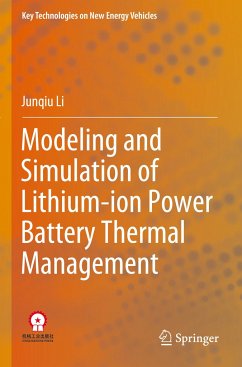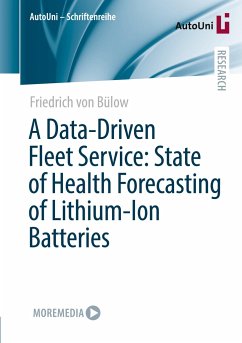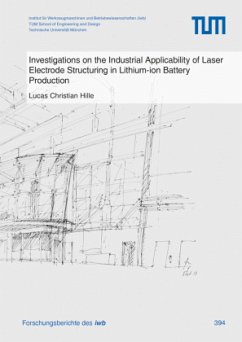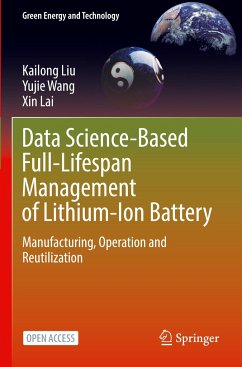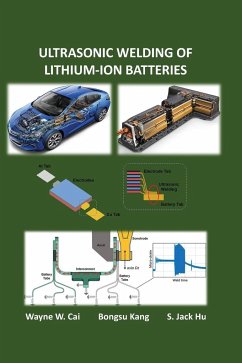
Modeling of High Speed Remote Laser Cutting for Lithium-ion Batteries
Electrodes : Multilayered Composite Materials
Versandkostenfrei!
Versandfertig in 6-10 Tagen
53,99 €
inkl. MwSt.

PAYBACK Punkte
27 °P sammeln!
This research investigates the underlying physics of the laser cutting of electrodes for lithium-ion batteries and validates important findings experimentally.The mathematical model considers heat transfer, mass transfer, fluid flow, melting, solidification, evaporation, kinetic Knudsen layers, multiple reflections, free surface evolution, and composite materials. The developed model is applied to the laser cutting of electrodes. Interesting simulation results near the material interface between current collectors and active electrode materials are observed. In addition, experimental results a...
This research investigates the underlying physics of the laser cutting of electrodes for lithium-ion batteries and validates important findings experimentally.The mathematical model considers heat transfer, mass transfer, fluid flow, melting, solidification, evaporation, kinetic Knudsen layers, multiple reflections, free surface evolution, and composite materials. The developed model is applied to the laser cutting of electrodes. Interesting simulation results near the material interface between current collectors and active electrode materials are observed. In addition, experimental results are presented. The kerf width of electrodes and composition change along the cut surface of electrodes are validated. The theoretical prediction shows a reasonable agreement with experimental observations. Moreover, the optimum range of laser parameters providing both high speed and high quality cutting are obtained.



